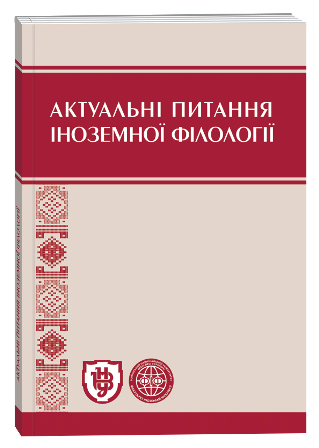PHONOSTYLISTIC CHARACTERISTICS OF GERMAN EMOTIONAL EXPRESSIONS (THE EMOTION OF ANGER)
DOI:
https://doi.org/10.32782/2410-0927-2021-14-1Keywords:
prosody, intonation, emotional speech, basic emotionsAbstract
The aim of the study is to analyze the phonetic characteristics of emotional expressions on the example of basic emotions of «cold» and «hot» anger and determine the role of components of intonation in the expression of emotions in speech. The article describes the phonetic characteristics in the spontaneous speech of German speakers and establishes a set of prosodic characteristics that are inherent in the selected emotions. The common and distinctive features of the main prosodic characteristics of emotionally neutral and emotionally marked speech for each of the emotions are also described. To achieve the aim of the study, a comprehensive method of auditory and instrumental analysis of the material were used. Auditory analysis revealed differences in the prosodic features of the German neutral and emotional language in terms of determining the direction of melody, tempo and volume of the speakers. Instrumental analysis of speech material was performed using the PRAAT Versus 4.5 and allowed to obtain data on the frequency of the main tone in Hz, the intensity in dB and the duration of pauses in ms and to establish the main acoustic correlates of emotional and neutral speech. The scientific novelty of the obtained results is determined by the fact that the work establishes common and specific prosodic characteristics that determine German emotional speech for basic emotions «cold anger» and «hot anger», represented by the variability of tonal, dynamic and temporal acoustic characteristics of speech. It was found out that markers used to identify «hot» and «cold» anger emotions in speech are short pauses, acceleration of speech rate, wider intensity range, the medium frequency range of the implementation of phrases for «hot» anger, the medium and extended – for «cold» anger.
References
Борисова А. А. Восприятие эмоционального состояния человека по интонационному рисунку речи. Вопросы психологии, 1989. С. 117–124.
Клименко М. С. Розробка структури системи розпізнавання емоційного стану диктора. Штучний інтелект, 2016. № 1. С. 17–26.
Клименко М. С. Удосконалений метод розпізнавання емоційного стану диктора із семантичним аналізом змісту. Штучний інтелект, 2018. № 1 (79). С. 22–27.
Пашина А. Х., Морозов В. П. Опознавание личности человека по голосу на основе его инвертированного во времени звучания. Психологический журнал, 1990. С. 70–78.
Пиотровская Л. А. Эмотивность и дейксис. Российский государственный педагогический университет им. А. И. Герцена, Санкт-Петербург, 2014. С. 321–332.
Цеплитис Л. К. Анализ речевой интонации. АН ЛатвССР. Ин-т языка и литературы им. Андрея Упита. Рига : Зинатне, 1974. 272 с.
Berkowitz L., Harmon-Jones E. Toward an Understanding of the Determinants of Anger. Emotion, vol. 4, No. 2, 2014. P. 107–130.
Biassoni F., Balzarotti S., Giamporcaro M., Ciceri R. Hot or Cold Anger? Verbal and Vocal Expression of Anger While Driving in a Simulated Anger-Provoking Scenario. Università Cattolica del Sacro Cuore of Milan, Italy, 2016. P. 1–10.
Fairbanks G., Pronovost W. An experimental study of the pitch characteristics of the voice during the expression of emotion. Speech Monographs, 1939. P. 87–104.
Medeiros H., Moniz H., Batista F., Trancoso I., Meinedo H. Experiments on automatic detection of filled pauses using prosodic features, Lisbon, Instituto Universitário de Lisboa, 2013. 11 p.
Sendlmeier W., Klasmeyer G. Voice and Emotional States. Berlin, 2000. S. 339–357.
Steriopolo O. Theoretische Grundlagen der deutschen Phonetik. Winnyzja, 2004. 320 S.







